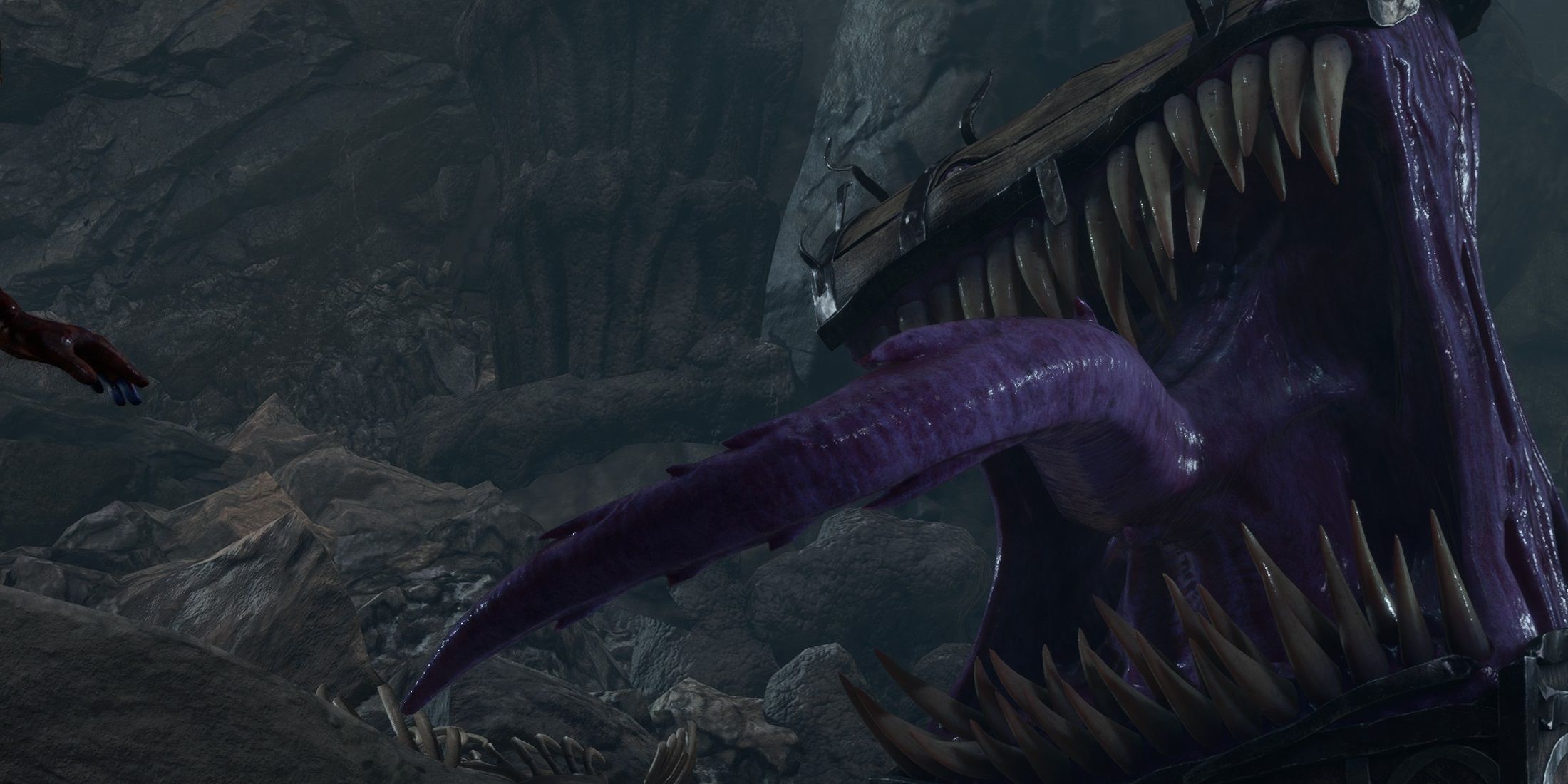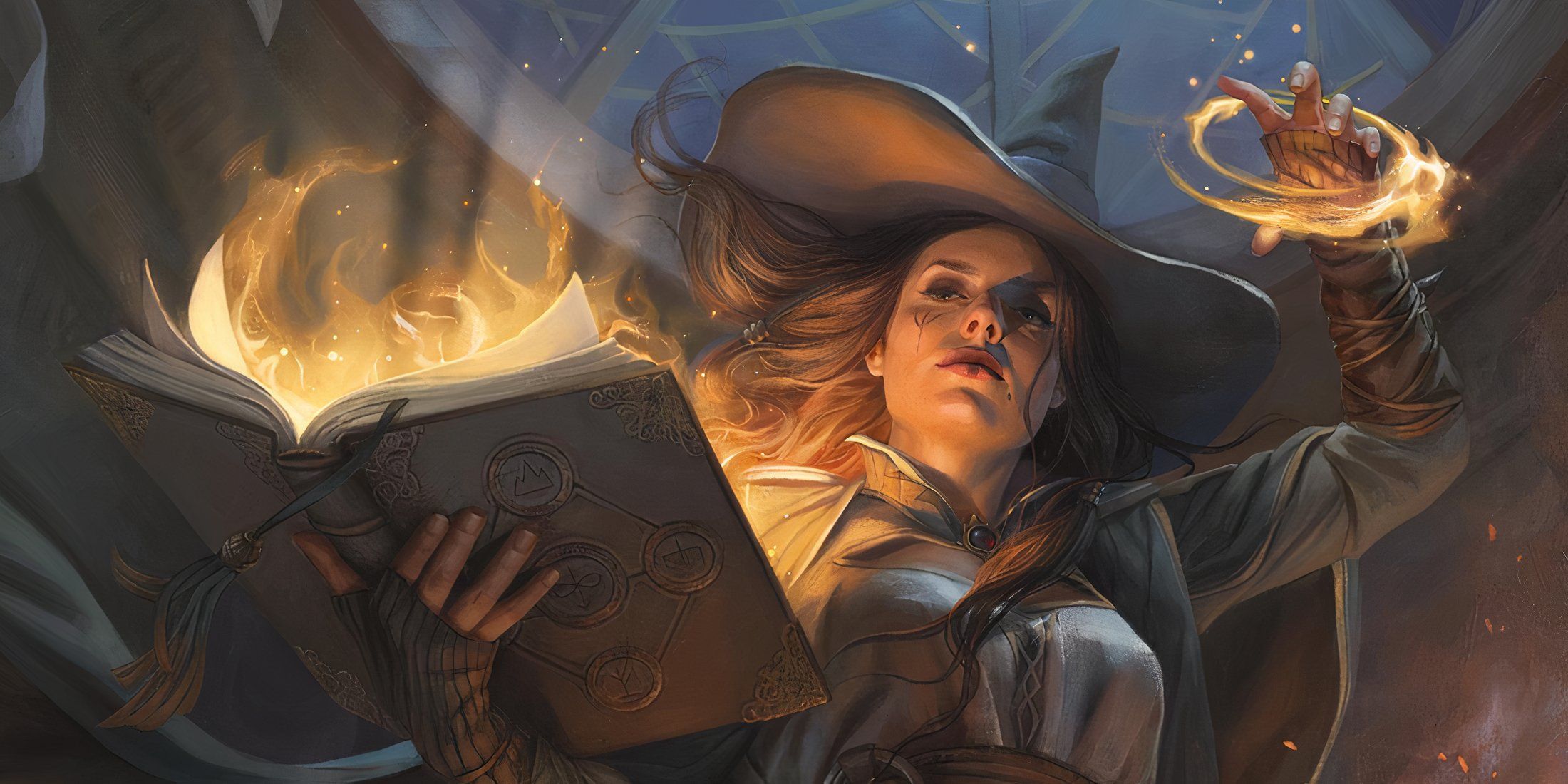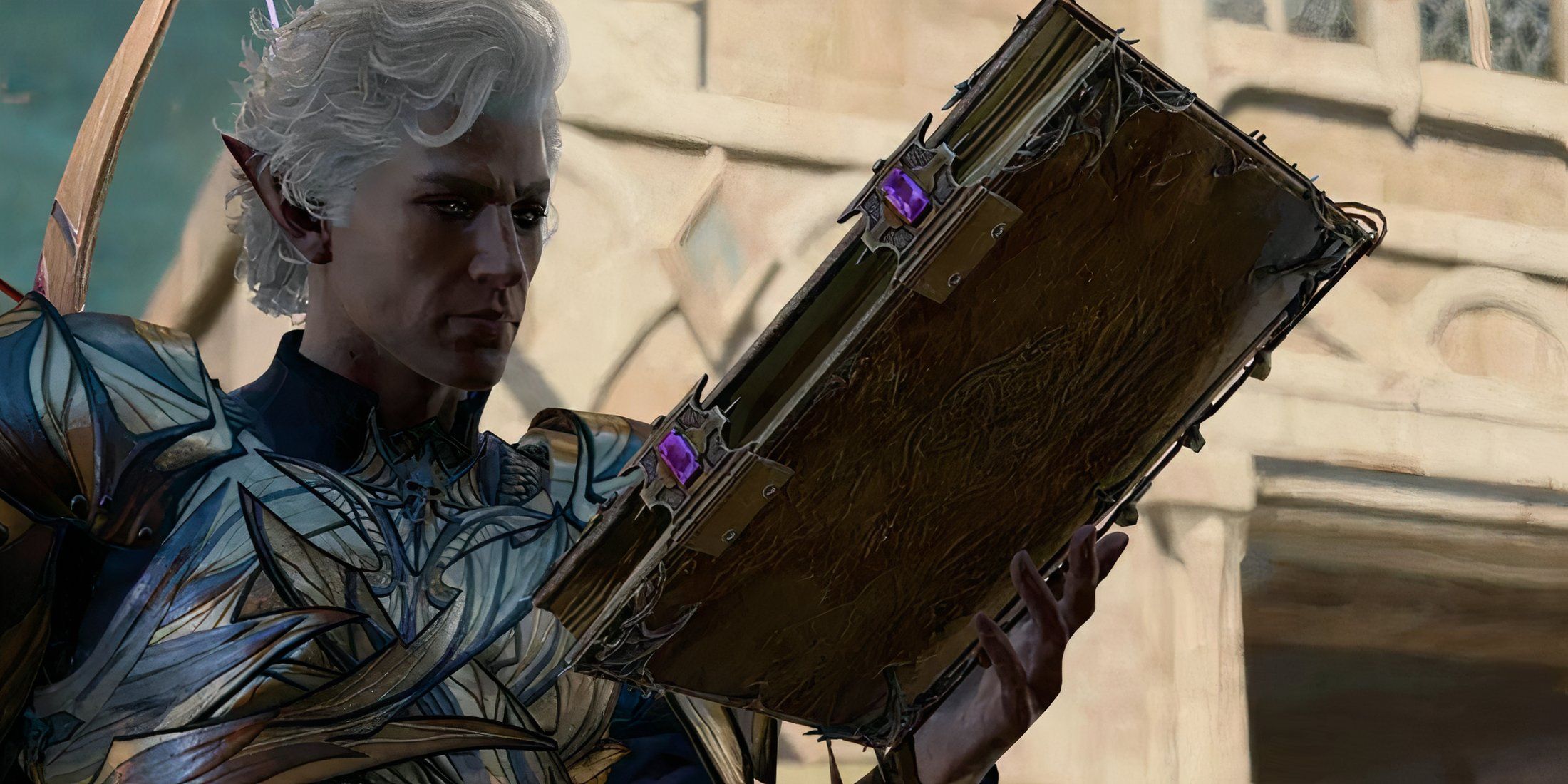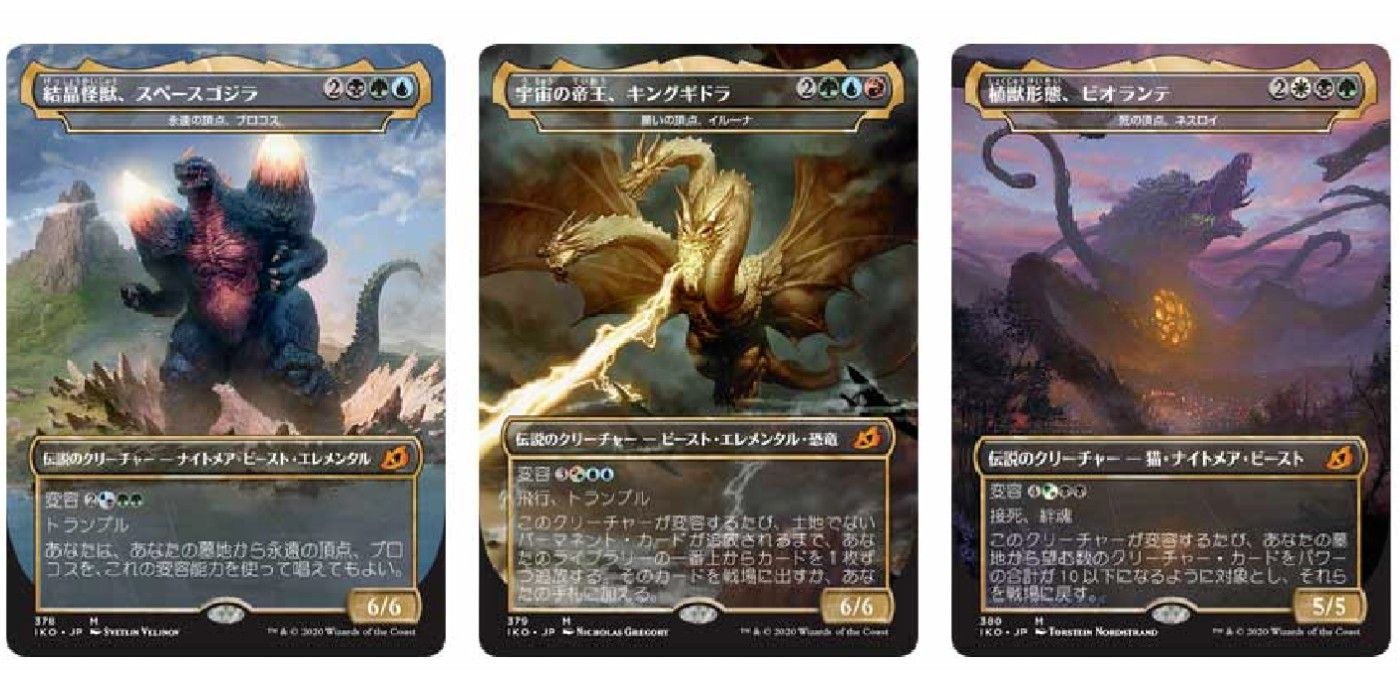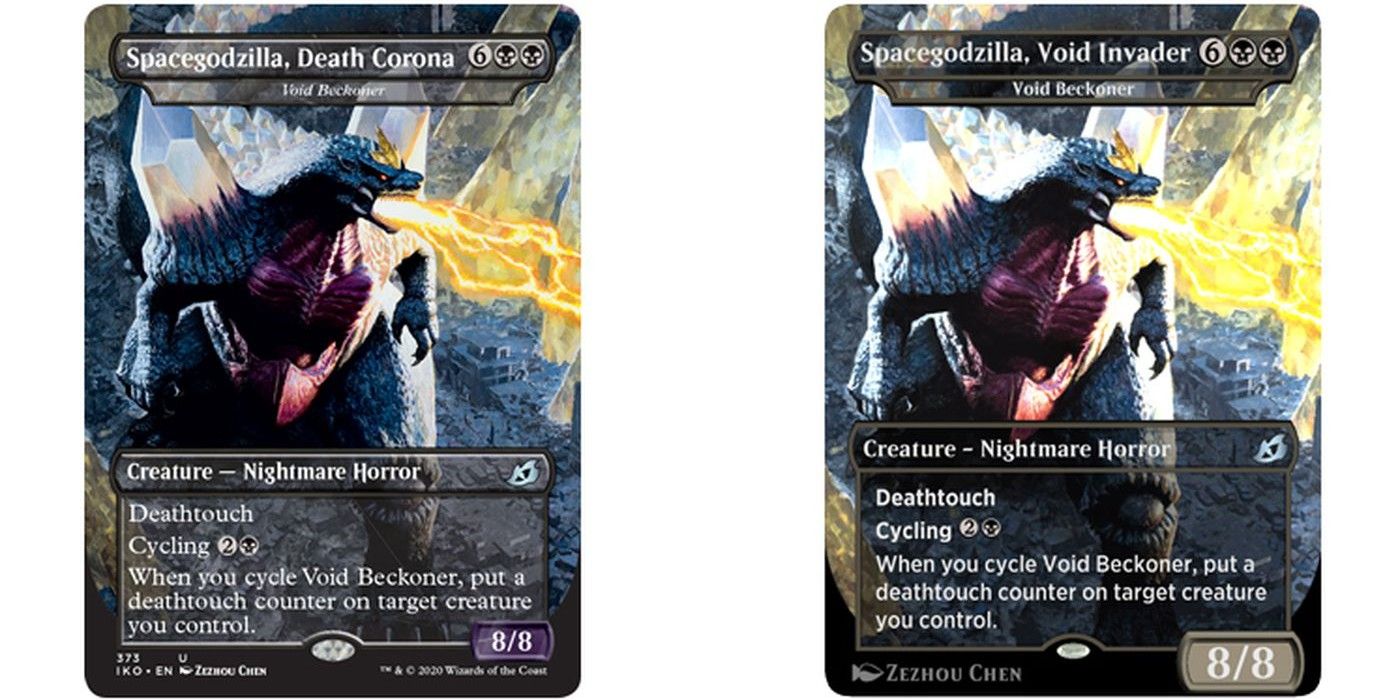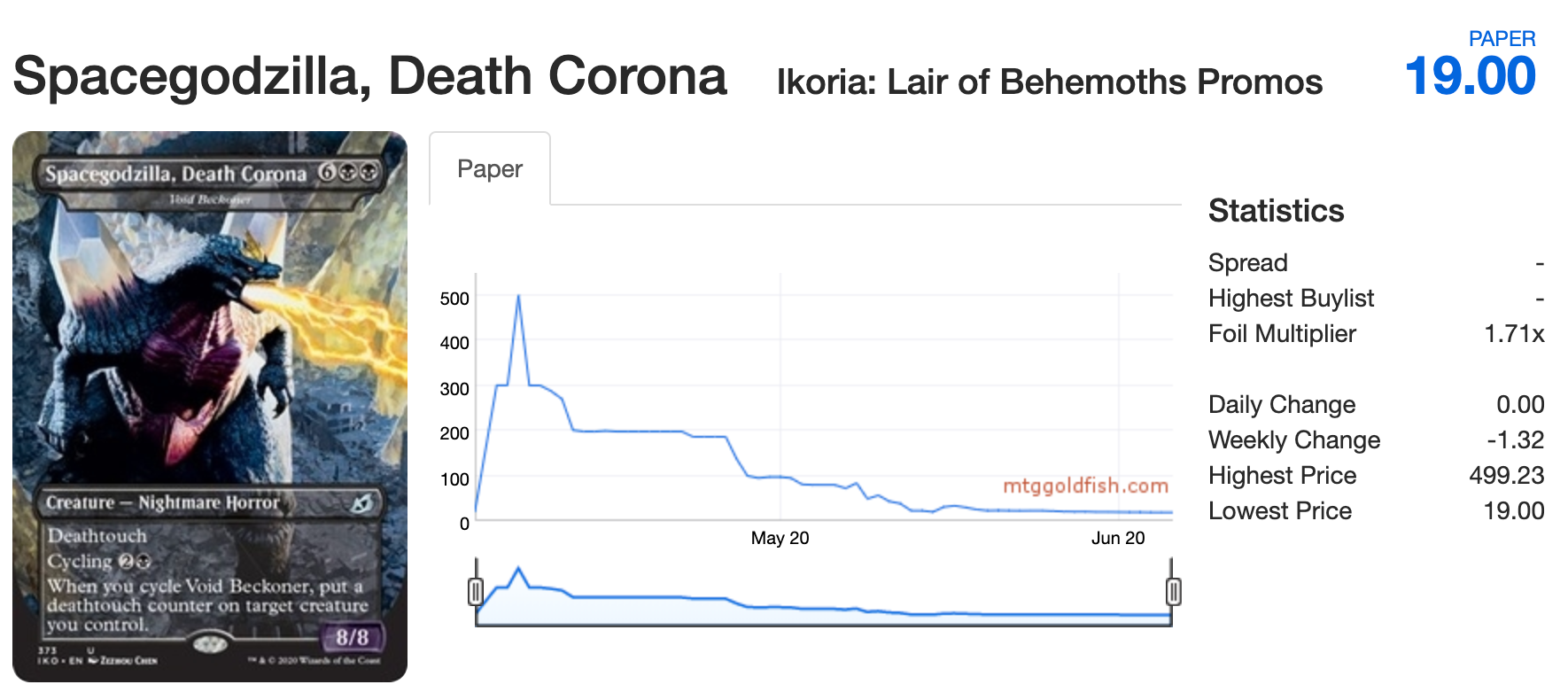As part of Ikoria, the most recent Magic: The Gathering set, Wizards Of The Coast teamed up with the Japanese film studio Toho Co. to bring the monsters from Godzilla to Magic. 16 cards from the new set would get alternative printings, each featuring an iconic character from the Godzilla series. For example, the card "Titanoth Rex" was also printed as "Godzilla Primeval Champion, "Sprite Dragon" became "Dorat, the Perfect Pet," and so on and so forth.
With some exceptions, the reception of the Godzilla tie-in was mostly positive. The Godzilla themed Magic The Gathering cards were only available in special edition collectors packs, so players who wanted the cards could seek them out, and players who didn't could mostly ignore them. In any other year, the roll out of the Godzilla cards would have been unremarkable, but as with everything in 2020, something went wrong.
One of the cards chosen to get an alternative printing is called "Void Beckoner." It's a good, not great card that doesn't see a ton of play outside of draft games. But it quickly became one of the most talked about cards in the set. This is because the Godzilla version of the card was called "Space Godzilla, Death Corona."
Spacegodzilla, Death Corona
Corona comes from the Latin word for crown, so Wizards meant for the title of the card to mean something along the lines of "crown of death." Obviously, the card was designed before the outbreak of the coronavirus, the pandemic which has devastated the global economy. In light of the outbreak, Wizards of the Coast announced that it was changing the name of the card from "Space Godzilla, Death Corona" to "Space Godzilla, Void Invader."
Unfortunately, according to Wizards, the card had already been widely printed, and it wasn't able to be changed "in time time to address the new meaning of corona." This means that the first print run the special edition boosters went on sale still containing the Death Corona title.
Magic: The Gathering's Secondary Economy
Magic: The Gathering has a thriving secondary economy, in which players and companies resell individual cards. Some Magic cards are incredibly valuable, like the Alpha Black Lotus that sold for a staggering 166k. Every year, millions of dollars pass through this secondary economy, and people have amassed small fortunes by buying and selling Magic cards.
For some investors, Spacegodzilla looked like a sure thing. And too be fair, the card had a lot of things going for it. There was a limited supply, it was never going to be reprinted, it was tied into a real world event, and it featured Godzilla art. Many bet this Magic card was going to be worth a lot of money, and investors scrambled to get their hands on it.
Wizards of the Coast announced the name change on April 2nd. By April 5th, the average price for Spacegodzilla was $300. Two days later, the average price was $500, but some copies were selling for as much as $1000. To put that in perspective, "Uro, Titan of Nature's Wrath," the most expensive card from the previous magic expansion, Theros: Beyond Death, is currently going for $45.
For a brief moment, it looked like the card would keep increasing in value exponentially, but the good times couldn't last. The price of Spacegodzilla started falling fast. By April 12th, the card had dropped to $200. The price hovered around that point until near the end of April. By May 1st, it was only selling for $100. By May 15th, it had dropped to a measly $20. As of writing, it's valued at about $19, but it's not hard to find copies selling for $10 or less.
The Price of Spacegodzilla
It seems like the Spacegodzilla card isn't as rare as people thought it was. While no one knows the exact number of cards printed, it seems like Wizards printed a good amount, which helped in its losing value.
But there's another reason why the price of Spacegodzilla fell so fast - it's simply not a very good card. There are two factors that determine how much a Magic card is worth: how rare it is and how playable it is. In the case of the Black Lotus, for example, not only are there very few copies of it remaining in circulation, but it's a very powerful card. It's a card that lets players do on turn one what they would normally be doing on turn three or four. It's colorless, it fits into every single deck, and it costs zero mana to play.
Spacegodzilla, on the other hand, is a creature with a high cost and a middling cycling ability stapled onto it. It has been a part of exactly zero meta decks, and it's hard to see a future where this card sees any play in any one of Magic's many formats. Most players want cards that they want to play, and this isn't one of them. Sure, it's a cool piece of memorabilia, and that's worth something. But is it worth $500? The market has clearly said no.
What happened with Spacegodzilla is what economists call a bubble. This is when the price of an asset is based an implausible view of the future. In other words, people think something is going to be worth a lot of money in the future, despite there being no evidence that it will be. People start spending too much money on that asset, and when it turns out to be worthless, the price collapses.
One famous example of a bubble in recent memory is the Beanie Baby bubble in the 1990s. Some consumers became convinced that Beanie Babies were going to be the next big thing, and started paying tons of money for them. The price of Beanie Babies rose and rose until it suddenly stopped, and then it bottomed out. People had realized that the stuffed animals were just that, stuffed animals, and were unlikely to hold any value. The market crashed, a few people lost their savings, and with a few notable exceptions, most Beanie Babies are now worth nothing.
The same thing happened with Spacegodzilla. There was no real evidence that the card would be worth money in the long term, but people invested anyway. And the people who bought into the hype ended up losing a lot. If someone bought four copies, known to Magic players as a play-set at the peak price, they would have lost over $1960 dollars. That's a lot of money, especially when considering that a booster pack of Magic cards sells for between $4 and $10.
If there is a lesson to be learned from this fiasco, it's that it's very hard to make easy money. Investors thought that Spacegodzilla was a sure thing, and imagining huge returns, they were willing to spend far too much money on the card. The returns never came, and a lot of money was lost. It's easy to read this story and laugh about people spending too much money on a card, but it's important to remember that real people lost real money and are hurting right now. Investing isn't easy, and if something seems too good to be true, it probably is.
Magic the Gathering is available in print format.

